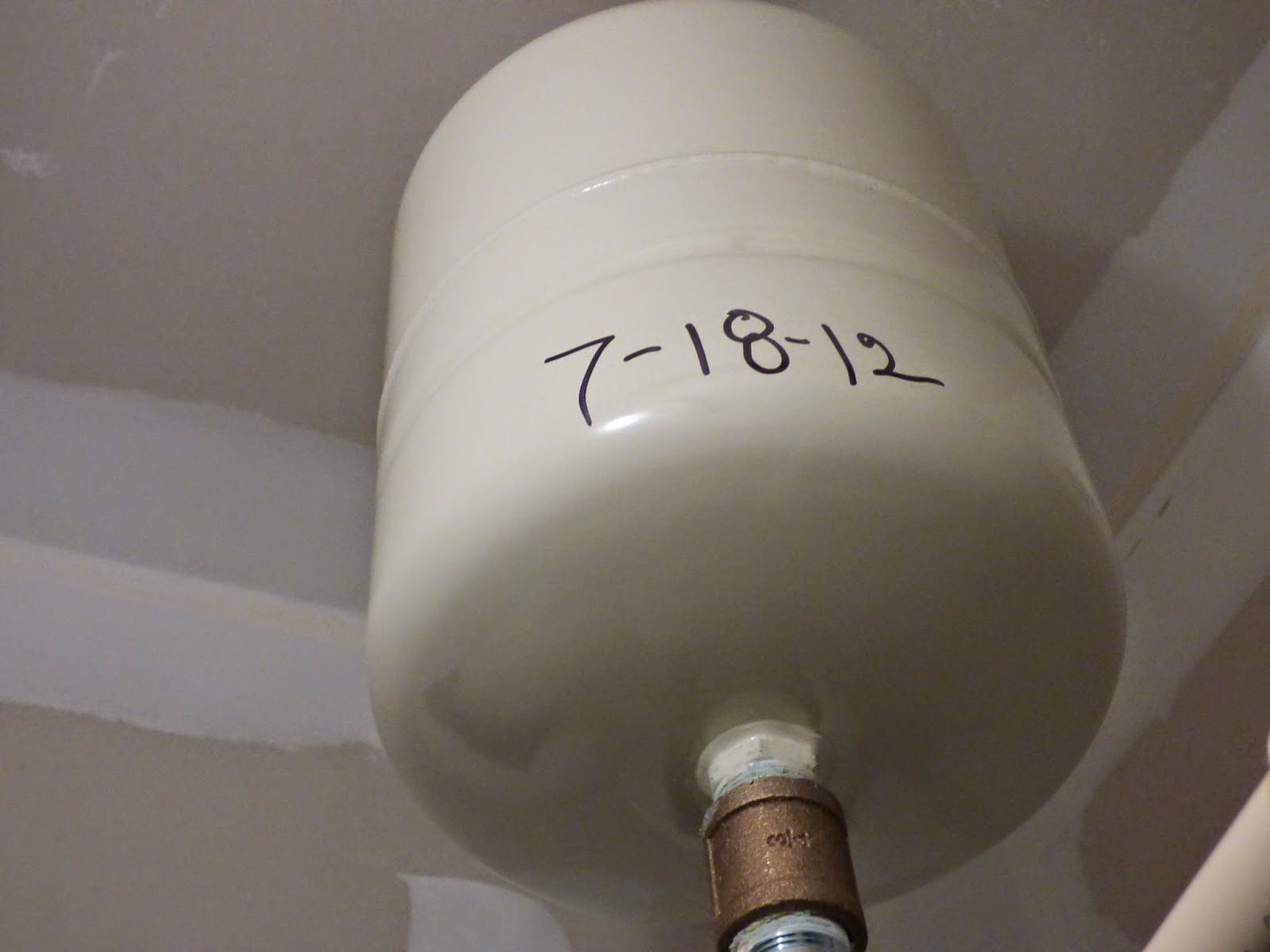This is a story about your water heater and how it works.
Let's start with the main water shut-off. Do you know where yours is located? Look in you utility room. You should see a square access cover a near eye level. If you pull on it, the shut-off valve is revealed. Knowing where it is and how to close the valve could save you hundreds of dollars of water damage.
To shut off all of the water to your unit, turn it perpendicular to the pipe. The one below is shown OPEN.

Our next stop is the water heater. the water heater does two jobs. It supplies hot water to your spigots and also recirculates water to a heating unit located in your utility room.
Your heating unit is a hot water fan-coil unit located in the duct-work in the utility room. Fan-coil means exactly that. A fan blows air across the hot water coils and forces it through the ducts to your room registers. The same fan also blows air across another coil used for air conditioning in summer.
The water heater in your closet heats the water and maintains the tank temperature all year long. The water temperature can be adjusted but it really only affects the recirculated water that flows to the fan-coil unit. Gas is used to heat the water.
On the tank, you will see the recirculate inlet and outlet connection on the right hand side.
On the top you will find the cold-water inlet and hot-water outlet. SHut valves can be used in summer to prevent hot water going to the heater coil.
A high pressure relief valve is located on the front. Its job is to prevent the tank from erupting in case of a control malfunction. The plastic pipe leads the water down to a catch pan that is expected to minimize flooding in the event of a malfunction. NEVER stopper the relief pipe.
The temperature of hot water in the recirculating tank can be adjusted from the front control display. (OK, ask somebody if you're not sure that you know what you're doing.)
(This will not make your spigot water hotter. I'll get to that later.)
Find the operator manual. read it. .......
Now that you have read the manual, check the current setting. Press, both the "HOTTER" and "COLDER" at the same time, now you can adjust the RECIRCULATING WATER TEMPERATURE. Chances are you do not need to change it. Unless you are unhappy with your heater's response, you should not touch it. You can lower the setting in summer. Please note, that it need not be higher than A. Someone in the building had it adjusted it to "C" and the heater popped its high pressure relief valve. Water. water, everywhere.
 Recirculating water temperature control: It controls water that goes to the heater and the holding tank.
Recirculating water temperature control: It controls water that goes to the heater and the holding tank.The hot water temperature for you spigots is controlled by MIXING VALVE above the water
heater.
Since the water exiting the heater is too hot for skin contact, it is mixed with cold water. On one side cold water enters. On the other side, hot water enters from the water heater. The water that exits the mixing value is delivered to your spigots, shower heads, and washing machine. In most municipalities these safety mixing valves are required by code.
 The spigot water temperature can be adjusted by turning the knob on the valve. Any adjustment should be made in small increments. This device is meant to prevent burns. Once again, read the manual.
The spigot water temperature can be adjusted by turning the knob on the valve. Any adjustment should be made in small increments. This device is meant to prevent burns. Once again, read the manual.
HOT = Copper left
COLD = Copper Right
Hot Tap Water = Bottom to plastic pipe
Expansion Tank
This is the weakest link in the system. This is a simple and inexpensive device. It purpose is to accommodate the expansion of the water and trapped air in the recirculating water lines. Why it leaks after several years speaks to the quality of the tank's lining. The tanks is easily replaced. Screw it off, screw on a new one.
This is mine, Good for another two years, I hope.
Safety Concerns with Natural Gas:
 Lastly, remember that we are burning gas all year long for hot water and heat in the winter. Gas is safe if all of the equipment is in proper working order. Your heater is equipped with a flame-safeguard control that will shut-off the gas is the flame is lost.
Lastly, remember that we are burning gas all year long for hot water and heat in the winter. Gas is safe if all of the equipment is in proper working order. Your heater is equipped with a flame-safeguard control that will shut-off the gas is the flame is lost.Go one step further, get a Carbon-Monoxide Gas Detector. Locate it nearby the water heater closet. Many people are asphyxiated by malfunctioning gas furnaces every year.
Best Regards, Uncle George
Send you letters to mc900@comcast.net



No comments:
Post a Comment